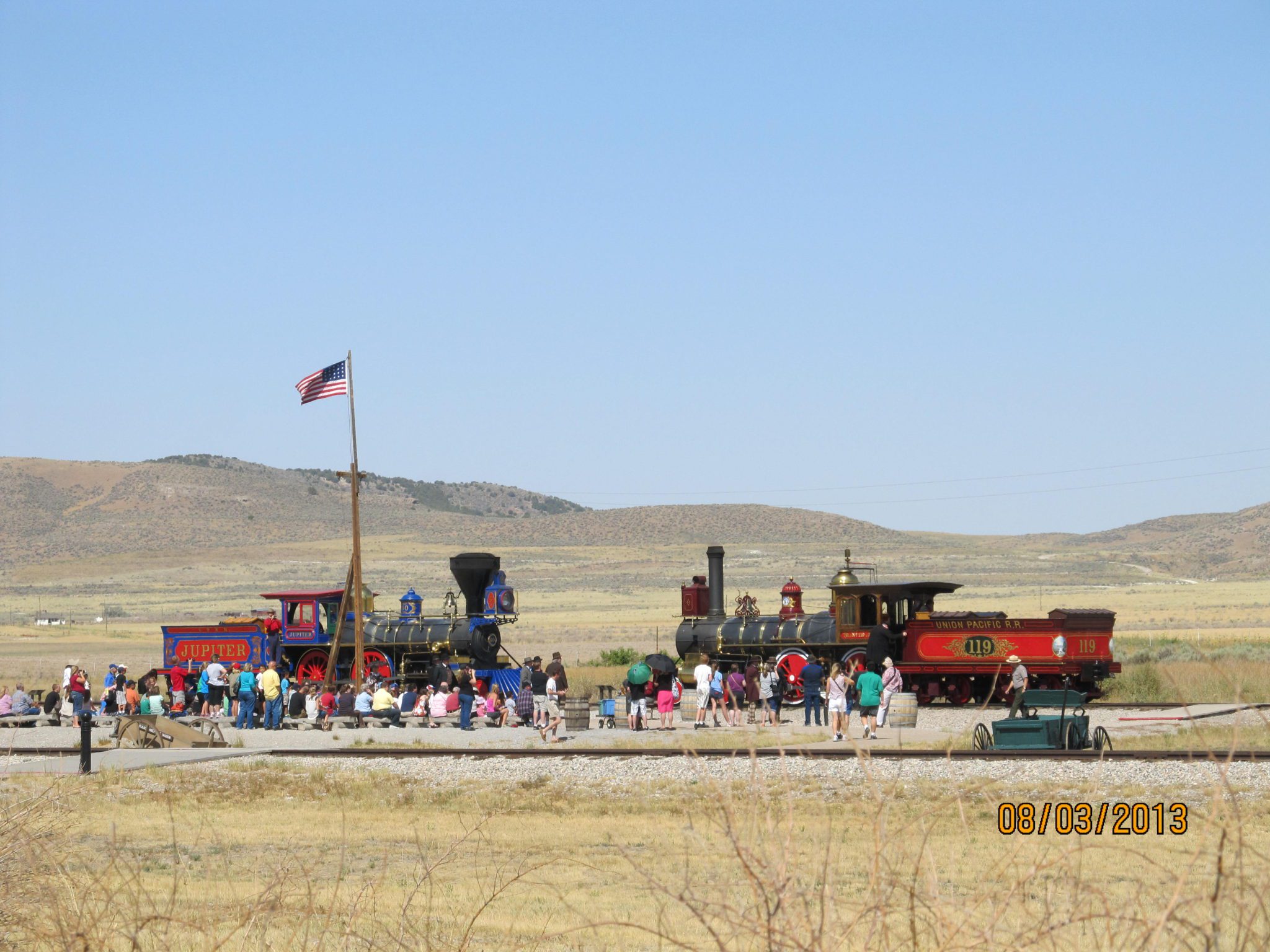
If you are interested in the history of the Old West, and should you ever find yourself traveling to or thru northern Utah by way of I-84, I would highly recommend you reconnoiter the Golden Spike National Historical Site.
Located at Promontory Point just north of the Great Salt Lake itself, the Golden Spike National Historical Site (hereby known as GPSNHS) is the location where the transcontinental railroad was officially linked together. Crews from the Union Pacific railroad laid tracks west across the plains and Rocky Mountains, while simultaneously workers from Central Pacific railroad blasted and dug their way through the Sierra Nevada until they met up at Promontory Point.
One cannot overstate just how momentous this event was to the development of the West, and the United State in general. Before the transcontinental railroad, travelers who wanted to reach the west coast had two options: take a ship around South America or make the long trek. Both options were dangerous and fraught with peril. Whichever way they went it would take travelers weeks if not months to make the journey.
After the railroad was complete, people could travel from Chicago to San Francisco in a week or less. This allowed for the opening of the West, and closed the chapter on the age of the Conestoga wagon. Millions of settlers flooded into the more accessible regions (to the obvious detriment of the people who already lived there). But it was more than just people: raw materials such as gold, silver and copper could be shipped more reliably. Cattle from Texas could be driven to railway depots in Kansas to be shipped back East. The railroad was a game changer.
The GPSNHS has a museum and a gift shop. In addition to the museum, the site has replicas of Jupiter and No.119, the two trains that met for the official golden spike ceremony, that reside on the Engine House and can be toured when they are not taking part in reenactments. On Saturdays during the summer months, volunteers and audience members reenact the Last Spike ceremony, albeit with a little more tongue-in-cheek than I would imagine the original ceremony was performed.
During the summer months both trains perform demonstration runs twice a day (minus the reenactors), except on days when the boilers need to be cleaned. See https://www.nps.gov/gosp/planyourvisit/hours.htm to plan your visit and get directions.
GPSNHS is out in the middle of a frickin’ desert, it’s hot as hell in the summer and there is nothing else around there. But for train buffs and history aficionados it is well worth the trip.


